Relations between Russia and India are exemplary from Moscow’s perspective, as they demonstrate how powers should interact amid the changing international order. First, their relationship is grounded in the responsibility which governments have to their people, whose interests always come first for Narendra Modi and Vladimir Putin. Second, it assumes equal benefits and the ability to appeal to mutual interest where it is most needed: in resolving national security and development-related problems. Third, they rely on what the parties can actually offer now in terms of politics and economics. Fourth, these relations take into account the other priorities of the parties as well as the important position each play in international politics, which imposes many obligations. Finally, they do not assume that one partner is the leader, proposing an agenda that the other is only invited to follow. The leaders’ mutual respect and deep understanding underscores the interests of both powers.
Despite the fact that friendly relations between Russia and India have a rich history, the countries are now looking to the future. It would be difficult to say that the scale and different directions of cooperation are determined by what was done over the course of several decades during the second half of the 20th century. However, what is important for the relationship between the parties is their nature and spirit, which took shape quite earlier. First of all, we are talking about respect for each country’s choice of socio-economic development model and political system. In fact, this is precisely what serves as the principle that, from the Russian point of view, is central to stable relations between powers – respect for each country’s internal system of ideas about justice. In that case, as seen from Moscow, if this spirit is preserved, the parties can freely take advantage of the opportunities that the modern world opens up for them.
The main indicator of the dynamics of relations between Russia and India at the moment is trade turnover between the countries. The acute military-political conflict between Russia and the West has created conditions where a “turn to the East” in Russian foreign economic relations became a necessity choice. In the context of the sanctions war being waged by the United States and Europe, Russia seeks to maintain its presence in the global market, to which it has much to offer. India, for its part, remains committed to the principles of global market openness and freedom to develop economic ties where it meets the interests of each state. Moreover, the Indian government, while consistently advocating for a peaceful resolution of the conflict around Ukraine, does not participate in unilateral measures of economic pressure on Russia. This position is seen in Moscow as a sign of India’s desire to pursue its national interests.
As a result, over the past 2.5 years, the scale of Indian-Russian trade has grown 4.5-fold. By the beginning of 2024, India had taken second place in Russia’s total trade turnover – 9.1% (almost $65 billion). In 2021, trade with India had accounted for only 1.7% of Russian trade turnover. The growth was mainly due to a sharp increase in Russian supplies to India – mainly oil and petroleum products, purchases of which reached $49 billion in 2023. India also imported $4 billion in Russian coal, as well as fertilizers ($2.4 billion), diamonds ($1.1 billion), and sunflower oil (just over $1 billion), according to data from the Indian Ministry of Commerce for the 2023 calendar year. India’s exports of goods to Russia in 2023 increased 39% year-over-year to $4.06 billion. Of this, about $1 billion is machinery and equipment, electrical equipment, and instruments. Exports of smartphones to Russia from India alone have grown 14-fold during this time. Such data allowed the leaders of Russia and India, during Prime Minister Narendra Modi’s visit to Moscow, to set a goal of achieving bilateral trade turnover of $100 billion by 2030. It can be assumed that such an ambitious goal is based on the leaders’ assessment of the potential of their economies and the possibilities of their mutual complementarity.
It seems important to emphasise that the bilateral trade achievements of Russia and India are entirely a product of their commitment to global market economy principles. They are only partly related to the spirit of mutual trust mentioned above, and are mainly the result of both countries taking advantage of new opportunities that provide significant flexibility in the development of foreign trade. In order to maintain this flexibility, Russia and India are gradually moving towards mutual settlements in national currencies. This movement is carried out on a bilateral basis and within the framework of the initiatives of the BRICS group, where both powers are responsible participants. The goal of the new mechanisms in the field of settlements, payments and cargo insurance is to preserve and strengthen the opportunities that countries use to realize their national development goals. Relations between Russia and India are not directed against any third powers or regional associations.
Maintaining flexibility and the ability to extract maximum benefit from relations determines the main promising areas of cooperation in the field of state regulation of the economy, which were identified at the meeting in Moscow. First, it entails support for mutual investments. Second, the development of a payment infrastructure that will not be subject to negative external influences. Third, stimulating settlements in national currencies, which necessitates a reduction in the trade turnover imbalance. And finally, the development of the insurance and logistics system. In particular, the development of the North-South transport system, which the parties will need in the context of continued instability in Eastern Europe and the Middle East, is becoming more important. Also, the development of the North-South transport corridor is important for wider involvement in international trade of the states of the southern part of the former USSR – Central Asia and South Caucasus.
Also, moving towards the India-Eurasian Economic Union Free Trade Area was discussed at the Modi-Putin summit. It is very important to expand Indian exports to Russia – this was also discussed at the Modi-Putin summit. However, it will not be easy: the Russian market is very competitive and it is necessary to understand how to increase access to it for goods from India. Another difficult area where large arms-producing states traditionally show restraint is the production in India of spare parts and components for Russian military equipment. This area is traditionally difficult for international cooperation: here Russia and India have an “Agreement on authorisation for the production of spare parts”, signed in 2023. When the parties are able to move in this direction, trust in their relationship will reach a new level.
India is seen in Russia as a paragon of a World Majority state – not aligned with one of the parties in the ongoing conflicts and guided by its own interests and principles. The state visit of the Indian Prime Minister and the summit in Moscow were, from the Russian point of view, important events of international significance. Prime Minister Narendra Modi’s visit and negotiations were not directed against the West, despite the fact that he was in Moscow precisely on the days when the NATO summit was being held in Washington. Russia understands this very well and knows how carefully India builds an international balance of relations, preserving its principles and striving for its own development goals. At a time when more and more countries are under pressure to choose sides in conflicts, the neutral and independent position of the Indian government is important evidence for Russia that a just world order is possible.
(The paper is the author’s individual scholastic articulation. The author certifies that the article/paper is original in content, unpublished and it has not been submitted for publication/web upload elsewhere, and that the facts and figures quoted are duly referenced, as needed, and are believed to be correct). (The paper does not necessarily represent the organisational stance... More >>
Image Source: https://www.pmindia.gov.in/wp-content/uploads/2024/07/H20240709162400.jpg



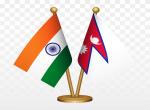

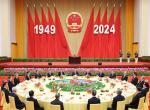
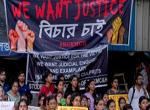
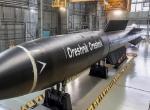
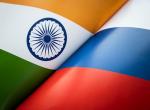
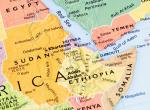

Post new comment